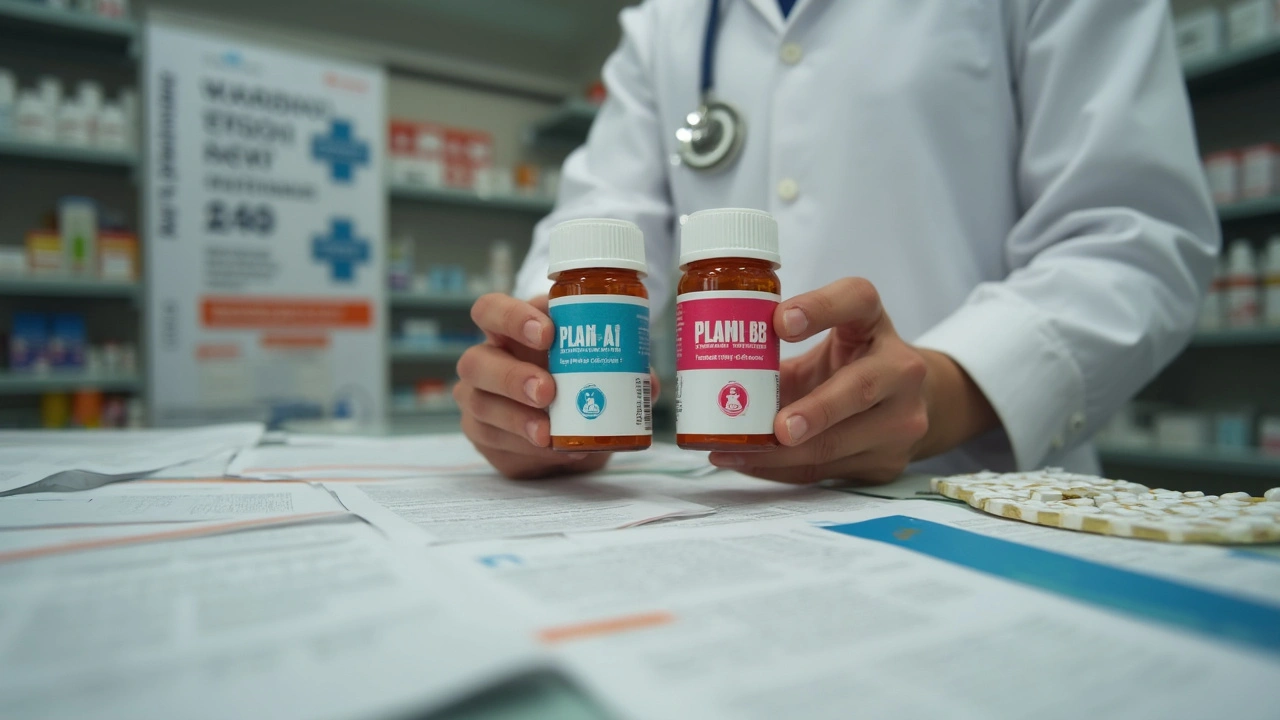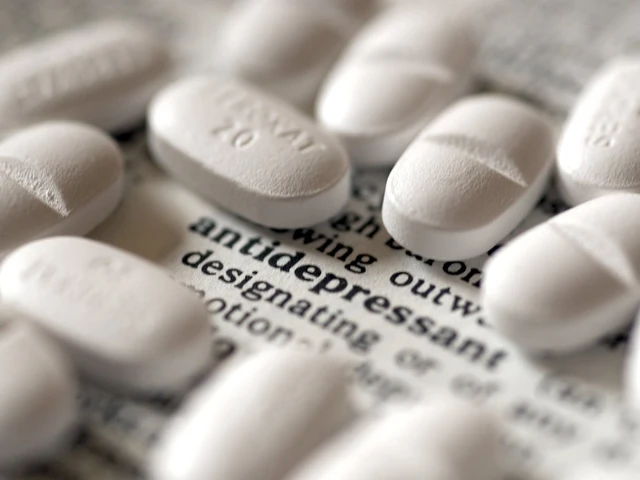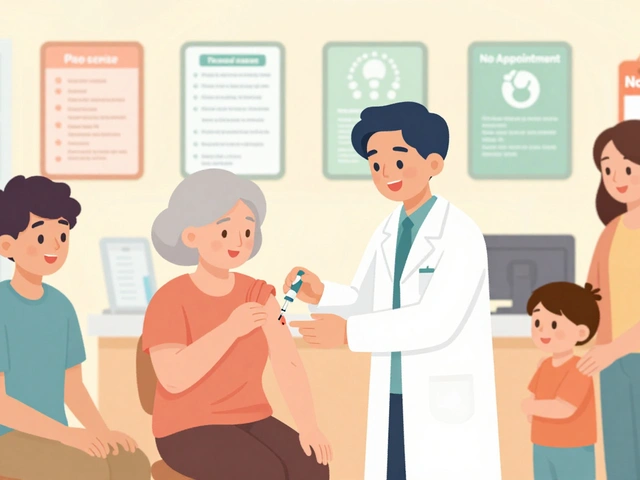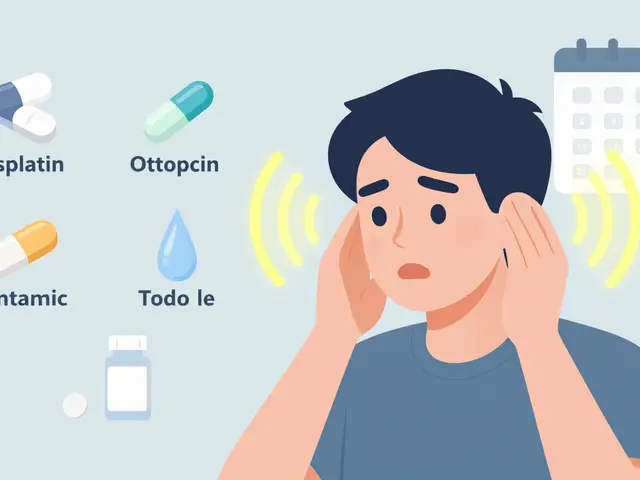The Antibiotic Dilemma: What Changed?
Imagine biting into a favorite sandwich, only to realize your go-to antibiotic won't help if you get food poisoning. That's where we are today—antibiotics that rescued millions now sometimes barely scratch the surface. It sounds dramatic, but studies from the World Health Organization show that antibiotic resistance is making some common treatments practically useless. Resistance doesn’t just happen overnight. Bacteria are smart—they change, adapt, and learn to fight back against the drugs we throw at them. Remember how you used to beat every video game as a kid until someone upped the difficulty? Bacteria have done just that. Today, over 2.8 million antibiotic-resistant infections hit the U.S. each year, according to the latest CDC numbers. That’s a ton of people finding their go-to meds just don’t cut it anymore.
If you're wondering why your old antibiotic prescription suddenly vanished for a new-name drug, it's not personal. Doctors don’t just toss darts at a board and hope. They look at local resistance data, patient history, and side effects when deciding which prescription works best. Lately, with more bacteria learning how to dodge antibiotics, medical folks have to jump ship to different meds—sometimes in the middle of your treatment plan. They keep a close eye on which bugs dominate in your city or hospital and watch out for red-flag cases where nothing seems to work. If your body isn’t responding, your doc might do some extra testing or swap you onto a different antibiotic—hopefully, one the bugs haven’t figured out yet.
Something else not everyone thinks about: Antibiotics are not magic bullets. Misusing them—like skipping doses, stopping early because you feel better, or demanding them for a cold (which is viral, not bacterial)—teaches bacteria how to fight. The result? That sniffle doesn’t turn into pneumonia because you finished all your pills last time! On the flip side, half-done treatments and over-the-counter misuse are like handing the bacteria a playbook. No wonder we're all in this sticky mess.
Here’s a weird fact: Some antibiotics have been in rotation since the 1940s. That’s practically forever in bacteria time. Think how much technology you’ve seen change in your life—antibiotics haven’t updated as quickly. Resistance rates keep climbing, especially with older meds. If a doctor switches your meds, there’s a good chance those germs already met the old drug in someone else and figured out its trick. Newer antibiotics or different families of the same meds just give you a better shot—literally.
If you get frustrated hearing about "antibiotic stewardship," it's really just code for minding the drugs we have left. Docs want to save the most heavy-hitting antibiotics for only the toughest germs. It’s why they might not use your favorite right away. Sometimes you’re offered a combo—two antibiotics at once—because each works in a different way and can team up on stubborn bugs. You might get a warning about side effects, or why you need to take this antibiotic with food, or to finish your full course even if you feel fine in a few days.
Many hospitals also track which bacteria are causing the most trouble locally. These "antibiograms" help docs stay ahead in the resistance game. If you get switched to a new med, it’s often because the chart says the new guy works better here, now. Don’t take it personally—it’s a science-based call, not guesswork. Next time your doc changes something up, ask which bugs are trending. Knowing a little more about the neighborhood's bacteria might make taking a new pill easier to swallow.
Spotlight on Resistance: Real-World Problems and Surprising Solutions
If you think antibiotic resistance is just a remote science issue, think closer to home. Maybe a family member struggled with a skin infection that dragged on for ages. Or you heard about a local outbreak of something tough to treat at a nearby school or gym. Some headline-grabbing bacteria—like MRSA—used to be rare outside hospitals. Now they pop up in regular households.
Doctors spot resistance trends with quick lab tests. If your infection lingers, they might swab it and figure out exactly what you’re up against. Testing isn’t just for show—it tells them which drugs the culprit can dodge, and which ones still pack a punch. Just because penicillin worked for your grandpa doesn't mean it'll work for you in 2025. In some parts of the world, even simple urinary tract infections need second- or third-choice meds up front, because the common ones barely work anymore.
If you’re picturing a dusty cabinet full of old antibiotics, think twice. New options hit the market every year. They don’t always get the spotlight, and sometimes insurance hoops or cost slow things down, but they’re out there. Some replacements are so finely tuned they target bacteria that have outsmarted nearly everything else. Others are re-vamped versions of classic meds, with tweaks so bacteria can’t recognize them immediately. In some cases, doctors even borrow antibiotics usually given for other illnesses or species (yep, some drugs are used in animals and humans—veterinary use has driven a worrying part of resistance but also taught docs a few tricks).
One overlooked way to outmaneuver resistance is narrowing treatment. Instead of carpet-bombing every possible germ, doctors use the smallest and shortest course possible. Shorter is often better—less time for bacteria to learn, fewer side effects wrecking your day, and lower odds of resistance building up. For example, some bladder infections clear up in just three days with the right med, instead of a week or more.
Challenging cases sometimes call for teamwork between doctors, pharmacists, and public health experts. New combinations, adjusted dosages, or substituting from a different drug family make a world of difference. Ever heard of switching from amoxicillin to cephalexin for the same infection? That’s often because one bacteria strain locally has given up on responding to amoxicillin. Some clinics even use a detailed cheat sheet—showing which antibiotics win most of the time in recent months—so doctors don’t just guess but use updated stats.
Bacteria are global travelers, hopping countries via people, food, and pets. That’s why someone can pick up resistant bugs on vacation and spread them at home. Bottom line: even your doctor’s best antibiotic might not work as planned. Smart strategies—like rapid testing and keeping options open—help you dodge the worst.

When the Doctor Switches Your Medication: What’s Happening?
If you’ve ever started one prescription and found yourself picking up a new bottle days later, you know how frustrating medication changes can feel. But behind every switch there’s usually a clear reason. Say your ear infection isn’t clearing up with the first round of pills. That doesn’t mean your body is failing or your doctor is guessing. Most likely, that little invader in your ear is resistant to your first med, or maybe you started to react poorly to the side effects.
Many doctors now order sensitivity tests. They send a sample from your infection off to the lab. There, scientists add different antibiotics and see which stops the bacteria cold. Think of it like a bake-off for germs. While you wait for results, you might get a "broad-spectrum" antibiotic that covers the bases. Once the test comes back, your doc might call—they’ve found a specific, targeted drug with a better track record against your bacteria. You swap meds, and hopefully, see real improvement quick.
Sometimes, side effects drive the switch. Tummy troubles, rashes, weird allergic reactions—these aren’t just annoyances. If you can’t keep your pills down, your body can’t fight the infection. In those moments, a new med (yes, even one with a much longer or harder-to-pronounce name) could mean the difference between days in bed or back to work.
Insurance coverage and shortages sometimes play a part, too. Say the gold standard antibiotic is suddenly on backorder. Your doctor scans the next best alternatives that still work for your specific bacteria. Don't be shocked if the pharmacist offers a generic brand, either—those swaps are common and save a ton of money, all while still knocking out the infection.
Sometimes you'll hear about famous drugs like Flagyl (metronidazole), a staple for certain gut and dental infections. If resistance is a local problem or you’ve hit a wall with Flagyl, your doctor might recommend you check out Flagyl alternative medications. That resource lays out some of the most promising, well-tested options doctors use when the old standby just isn't working. You’ll see names you've possibly never heard before because the world of antibiotic replacements is way bigger than most of us realize.
Some infections even need a combination of drugs to truly work. You might be switched to a two-pronged attack, combining different antibiotics that hit the bacteria from different angles—like flanking from both sides in chess. This isn’t overkill; it's a proven way to make sure especially wily bacteria don’t regroup and take over again.
Switching meds isn’t a sign of failure. Doctors choose based on how bacteria behave where you live, what your body can handle, and the realities of getting medicine from the shelf to your hand. Next time your treatment changes, ask questions. The more you know why things are shifting, the more you’ll understand what’s really protecting you.
Smart Choices & Your Role: Tips to Beat Resistance in Daily Life
You’re not powerless in all this. The way you use antibiotics has a direct ripple effect, not just for yourself, but for your whole community. Start by finishing each course as prescribed—no leftovers in the cabinet. Those half-used pills are a breeding ground for superbugs that remember everything you throw at them. If you get better before the bottle runs out, keep taking every dose on the schedule. That last tablet is as important as the first.
Fighting resistance isn’t just about pills. Every hand wash, cleaned kitchen counter, and finished vaccine is another barrier, cutting off bacteria before they have a chance to invade. Stay up to date on vaccines, especially for things like flu and pneumonia that often lead to secondary infections. Remember, those infections are when you’re most likely to need antibiotics in the first place.
When you get sick, ask your doctor if an antibiotic is really necessary. Most colds and flus are viral—antibiotics do nothing for them, and using them just gives bacteria new practice rounds. If your doctor says, "Let’s wait and see," it means they’re fighting resistance the smart way. If you do end up needing antibiotics, take them just like prescribed—never double up doses you missed or save them for "next time." That way, each infection is hit hard and fast, not given time to regroup.
Check your own medicine cabinet once in a while. Any old antibiotics, toss them (just not down the sink—most pharmacies will take back unused drugs). Cutting down on over-the-counter antibiotics without a real need is just good sense. You might think it’s harmless, but every unnecessary dose teaches bacteria how to get stronger.
If you feel weird on a new antibiotic (rash, tummy aches, trouble breathing), don’t tough it out—call your doctor. Sometimes swapping to a new family of drugs is safer and more effective. Don’t hesitate to ask about new options or the reasoning behind a change. Good medical care these days is a partnership, not a lecture.
Finally, stay in touch with the latest treatment options. New research, new drugs, and new combinations are always in the pipeline. Keep an eye out for updates from trusted medical sources, especially if you or a loved one deals with recurring infections. The world of antibiotics is changing fast, and sometimes, the difference between recovery and a lingering illness is getting the right information at the right time.
Antibiotic resistance isn’t going away tomorrow, but the good news is that new treatments and smart decisions can keep you a step ahead. If your doctor changes your meds, there's a science-backed reason. Ask questions, take your meds right, and keep that infection on the run.



 Medications
Medications





Jessie Eerens
July 18, 2025 AT 13:00Isn't it fascinating how the battle between man and microbe is ever evolving? Antibiotic resistance, in a sense, is nature's own way of adapting to our attempts at control, isn't it? This article really got me thinking about the cyclical dance between medication and mutation...
Why do we so often forget that when we change a drug mid-treatment, it's like a chess game against invisible opponents who evolve at lightning speed? The pragmatic approach here, outlining alternatives, is a breath of fresh air.
Still, I wonder, what does this say about our stewardship of modern medicine? Are we running a race that we're destined to lose, or can we outsmart these microbial adversaries with smarter, more sustainable strategies? The article hints at it but doesn’t deeply explore the systemic causes—overprescription, misuse, all that jazz.
One must consider: How do these new treatment choices stand up in real-world clinical settings and not just theory? Can we trust them as lasting solutions or mere stopgaps?
Anyway, definitely a must-read for anyone interested in the invisible wars we wage daily inside our bodies!
Caroline Lane
July 18, 2025 AT 15:47Okay, can I just say how annoying it is when doctors change your antibiotics halfway through? Like, you think you're finally getting better, and then bam, new meds with all sorts of side effects?? Ugh. I get it, resistance is real, but it feels like they're just throwing spaghetti at the wall sometimes.
Also, why is it that the alternatives always sound like some obscure science experiment? Barely pronounceable names, odd dosing schedules... it’s stressful and confusing.
Honestly, I wish there was more transparency from the medical community on why exactly these changes happen. This article was helpful though, because it at least tries to explain it without sounding like I'm reading a textbook. But still, it left me feeling kind of helpless.
Does anyone else feel like patients are just pawns in this big pharma game? Or maybe I’m just being paranoid...
Geneva Lyra
July 18, 2025 AT 18:33I really appreciate how this article breaks down a complicated topic into something more digestible. Sometimes, medical jargon can be intimidating, but sharing real-world examples makes it so much easier to understand the impact of antibiotic resistance on everyday people.
It's also encouraging that the article offers practical tips alongside alternative medications. This kind of knowledge empowers patients to have more informed conversations with their healthcare providers.
In my experience, fostering open dialogue and cultural sensitivity in medical settings helps bridge gaps and ensures patients feel heard — a crucial step considering the complexity of antibiotic resistance.
I hope there will be more resources like this that promote awareness and collaboration between patients and doctors. It’s definitely a global issue that needs community-driven approaches too.
Moritz Bender
July 18, 2025 AT 21:20As a healthcare professional, I must add that antibiotic resistance is indeed a multifaceted problem created by microbial genetics, selective pressure, and clinical practices. This article highlights the critical rationale behind switching therapies, often driven by pathogen susceptibility profiles and pharmacodynamics.
One thing to underscore is how important it is to complete prescribed antibiotic courses properly to prevent resistance emergence. Additionally, the innovation in newer antibiotics and adjunct therapies holds promise but requires rigorous clinical validation.
Pro-tip: Always discuss any adverse reactions or concerns directly with your healthcare provider before making changes on your own.
Lastly, rapid diagnostic tests are revolutionizing how quickly we detect resistant strains, enabling more tailored, effective treatments.
Stay informed, stay proactive! 😊
Nicole Hernandez
July 19, 2025 AT 00:07What really caught my eye was the notion of unpredictability in treatment changes. It’s daunting to face an illness when the remedy isn’t as straightforward as you’d hope.
But this article reassures that these switches aren’t random but based on evolving science and patient response.
Could the paper have addressed more about patient support during these shifts? Emotional adaptation matters just as much as the physical one.
Nonetheless, learning about alternatives and resistance mechanisms helps me feel more optimistic about navigating infections with better knowledge and care frameworks.
Has anyone else found that having this kind of detailed, yet approachable info makes the whole process less intimidating?
Nicholas Blackburn
July 19, 2025 AT 02:53Honestly, the rampant misuse of antibiotics in both humans and agriculture disgusts me. We deserve every bit of the resistance crisis we face due to careless behavior and ignorance. This constant 'switching meds' nonsense is just a band-aid on a festering wound created by decades of irresponsibility.
The article skirts around the real issue: lazy prescriptions, patient noncompliance, and the sheer arrogance of thinking we can control bacteria with pills alone.
I’m sick of hearing about 'new alternatives' when all that does is fuel the fire, leading to more resistant strains. Wake up, people.
Maybe if societal education was better and medical professionals actually enforced guidelines strictly, we wouldn’t be in this mess.
Kai Röder
July 19, 2025 AT 05:40I think it’s important to take a balanced view here. While the overuse of antibiotics is an undeniable factor in resistance development, progress is being made on multiple fronts, including stewardship programs and patient education.
The article offers a grounded perspective on why treatment modifications occur, which is essential for patient understanding and compliance.
By fostering collaboration between patients and healthcare providers, we can improve outcomes and reduce resistance rates together.
Also, the emergence of novel antimicrobials and diagnostic tools should not be discounted; they are the results of relentless research and represent hope for addressing these challenges.
Keeping informed and respectful dialogue are key elements moving ahead.
Brandi Thompson
July 19, 2025 AT 08:27Ugh, this whole antibiotic resistance thing is a total nightmare and honestly, the way they just switch meds without really explaining much is infuriating.
It feels like we're guinea pigs in some endless trial where we're expected to take whatevs they give us and trust blindly. The article barely scratches the surface of how confusing and scary it is for patients.
Why not talk about the emotional toll? The anxieties of treatment uncertainty, the fear when the first antibiotic fails, and the downstream effects on mental health?
Also, the alternatives they mention sometimes come with even worse side effects, and no one tells you upfront.
This topic needs a much deeper, human-focused investigation instead of just dry facts and medical jargon.
Chip Hutchison
July 19, 2025 AT 11:13Thanks for sharing this; it's crucial to shed light on antibiotic resistance from multiple angles.
From what I've observed, fostering empathy and awareness among patients helps reduce misuse and improves collaboration with clinicians during treatment changes.
It's a global challenge, and collective efforts inclusive of different communities and cultural contexts are necessary.
Understanding why meds change and the science behind alternatives strengthens patients' trust and engagement.
Hope more resources like this encourage thoughtful discussions rather than fear or misinformation.
Emily Moody
July 19, 2025 AT 14:00This whole situation with antibiotic resistance is just another symptom of our broken system. The article talks about switching meds but ignores the bigger picture — the wholesale abuse in farms, overprescribing, and the lack of true accountability.
We’re basically witnessing a collapse of medicine’s foundation because greed and ignorance run rampant.
Unless systemic reforms and robust oversight happen NOW, these so-called new treatment choices are meaningless bandages on a bleeding wound.
It’s a war, and we’re on the fast track to losing it if complacency and corporate interests dominate the narrative.
Wake up, people. This is urgent.
Noah Seidman
July 19, 2025 AT 16:47It's intriguing that so many people jump to blame external systems when, in reality, there is a philosophical debate raging about agency and responsibility in the antibiotic saga.
Are patients merely victims or participants? Doctors mere functionaries or moral agents? The deep ethical implications behind switching medications reflect larger tensions about medical authority and individual autonomy.
One wonders whether these treatment adjustments symbolize progress or futility in our endless struggle with microscopic life.
True understanding might require embracing complexity rather than seeking simplistic villains.
Nonetheless, this article serves as a timely reminder that science is never static, and our decisions must evolve in tandem.